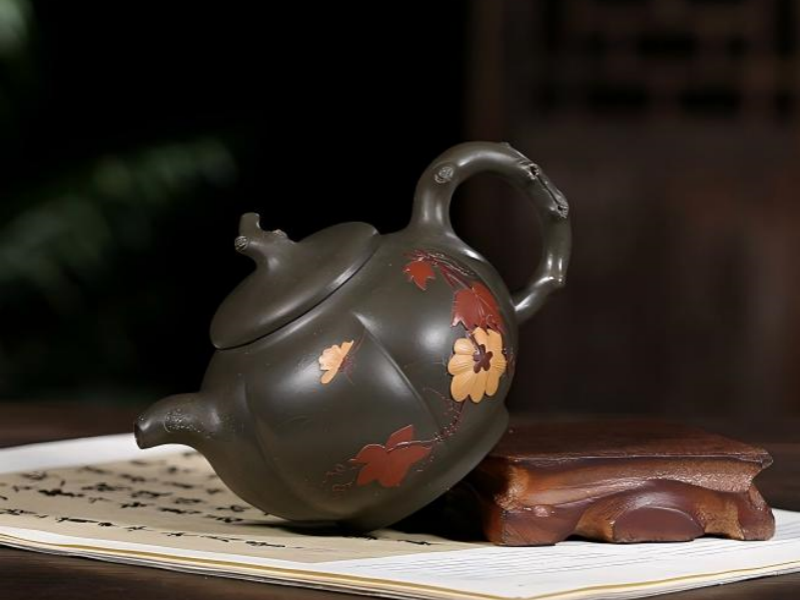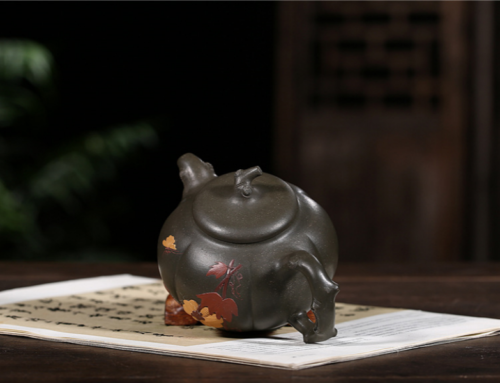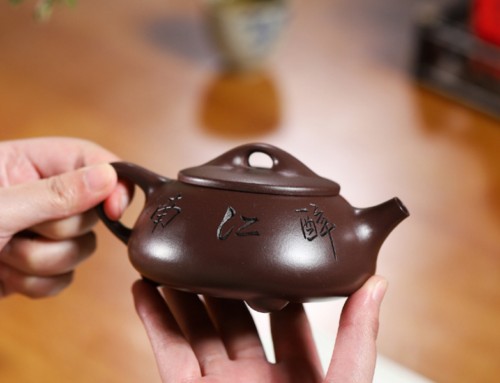Looking After Your China Teapot: Tips To Help it Last
Introduction
A china teapot is more than just a vessel for brewing tea; it’s a symbol of tradition, beauty, and cherished memories. Perhaps you inherited that delicate bone china pot from your grandmother, or you picked up a stunning porcelain piece on your travels. Whatever the origin, your teapot tells a story. Preserving your china teapot’s beauty is more than just keeping it shiny; it’s about safeguarding it for future generations so that it can continue providing the functional and sentimental value it has to you.
Did you know that, with proper care, fine china can survive more than a century? Some collectors cherish teapots which have descended to them over the generations. These genteel trappings can have their fair beauty whittled away if not given the proper attention. From invisible cracks to niggling stains, a beautiful pot, neglected, can fade into a dusty lovelessness. But it doesn’t have to be this way– with the right treatment, your teapot can be the centerpiece of your tea ceremony for years to come.
Here’s what you’ll find in this guide: the basics of different types of china teapots, essential maintenance routines, storage and display hacks, safe brewing practices, and answers to common questions. Along the way, you’ll see real examples, helpful lists, and expert insights so you can confidently preserve your china teapot. Whether you’re a seasoned collector or just getting started, these maintenance tips for longevity will serve you well.
Understanding China Teapots
Types of China Teapots and Their Needs
Before figuring out how to preserve the life of your china teapot, the most important thing is to find out what distinguishes it from the rest. Not every china teapot is the same in style, durability, care, and material quality. Porcelain, bone china, and fine china are not free of this rule, either. Here’s a brief summary:
Porcelain teapots are recognised for being sturdy with a classic, white, eggshell-like appearance. They tend to be suitable against thermal shock, but they can be chipped easily after sustaining damage. A chip in a porcelain set may start off small, but over time, cracks from it could spread across your teapot.
Bone china teapots are soft and light to the touch, because they contain bone ash, which also gives them their characteristic ivory colouring. Surprisingly, despite its delicate appearance, bone china is incredibly tough. Nevertheless, bone china doesn’t like sharp changes in temperature and humidity and should be treated with extra care, especially older heirloom items.
Fine china teapots typically have lovely hand-painted designs and thin walls. Great for special occasions, but more susceptible to stains from dark teas and to hairline cracks from regular use.
| Type | Main Features | Care Considerations |
|---|---|---|
| Porcelain | Durable, smooth, non-porous, white finish | Handles heat well but chips easily |
| Bone China | Lightweight, slightly translucent, creamy | Very fragile; avoid temperature extremes |
| Fine China | High-gloss, elegant, often decorated | Prone to cracking and staining |
Data Source: Material and care considerations corroborated by technical standards ISO 14507:2018 (Ceramic and glassware), academic resources from the Jingdezhen Ceramic Institute, care guidelines from the China National Tea Museum, and scholarly articles indexed by China National Knowledge Infrastructure (CNKI) (https://www.iso.org/standard/72398.html, http://www.jci.edu.cn/, http://www.teamuseum.cn/, http://www.cnki.net/).
Identifying a Delicate or Antique Teapot
Many collectors don’t even know they’re using anything old or delicate until a minor accident exposes a fragile glaze or an otherwise undetectable fracture.
“A china teapot is like a fine wine—its value increases through careful use and a little bit of respect.” —Margaret Lin, Antique Ceramics Specialist
Knowing what you have is half the battle. Once you do, you’ll have a better idea about why some of the suggestions for maintenance for longevity are great for keeping your china teapot intact.
Essential Maintenance Suggestions
How to Care For Your China Teapot: It’s All In the Day To Day
Your china teapot will last for generations if you care for it properly on a day by day basis. Teapots are easy going – they probably won’t show any signs of damage for years, but a lifetime of poor handling want of care will eventually take its toll. You can’t control what happens to your teapot when you’re not around, but every time you lift it, pour from it, or put it to rest between uses you can make the decision to help or hinder its survival.
Maintenance tips for longevity. Keep your teapot pristine and ready for many more tea moments with these ways to care for it:

Quick Tip: When you take a teapot off a cool shelf to brew some tea, let it sit at room temperature for ten minutes before you rinse it with hot water. This practice has prevented untold numbers of teapots from developing fracture lines that you cannot see.
Daily care isn’t glamorous, but it’s the foundation of maintaining your china teapot over the long haul. These simple, thoughtful tasks will lay the foundation for many years of lovely tea service.
Cleaning Your China Teapot
Gentle Cleansing Routine
Regular cleaning keeps your teapot looking and smelling fresh—and prevents stain build-up that can cause long-term damage to china or alter the taste of tea. Here’s an easy step-by-step routine:
What to Avoid:
Bleach, baking soda, or scouring powders.
Dishwashers are a bad idea for most china teapots. Even if the pot is labeled “dishwasher safe,” glazes and hand-painted designs (especially vintage ones) may not be.
Removing Stains and Odors
Even if you’re careful, stains can sneak in over time—especially if you enjoy big pots of dark tea. Here’s how to tackle tough stains:
Natural Stain Removal:

The Case of the Vinegar Miracle Doubtful? Don’t be. A Bath-based collector soaked her 1920s bone china teapot in white vinegar to lift incredibly deep, set-in stains. According to her, “it took two sessions — all night and another while I was at work — but it worked. The teapot was restored to its original sheen, unharmed by any scratches.”
Truly clean, well-maintained and unstained china teapots are the result of consistent cleaning and stain vigilance: the two keystones of centuries-long china teapot preservation. Keep it clean, clean it gently and act on stains quickly, and you’ll never have to deal with the signs of neglected teapots: dullening, deterioration and damage.
Deep Cleaning & Checking For Damages
No matter how carefully you treat your china teapots on a day-to-day basis, they’ll still need a soak-and-dry every so often to get stubborn stains out, and more importantly, to highlight hairline cracks and small damage that would otherwise go unnoticed until it worsens.
Why and When To Deep Clean Your China Teapot
If your teapot sees daily use, a deep clean every month or so makes sense; if it’s only plopped onto the table for special occasions, mingling with the fine foods, a deep clean every 3 – 6 months is plenty. Here’s how to do it without damaging your teapot:
If you see minerals from hard water clinging to the inner walls, try filling the pot with a solution of water and lemon juice, letting it sit, then rinsing well. Always avoid overnight soaks; prolonged exposure to water can weaken delicate glazes.
Spotting and Addressing Chips and Cracks
Small chips and hairline cracks are the enemies of teapot longevity. Not only do they mar the appearance, but they can also harbor bacteria or lead to leaks. Here’s how to stay ahead:

Fact: The International Tea Committee reports that more than 50% of all china teapots that suffer terminal failure are victims of hairline cracks which have gone unnoticed and lengthened as the tea has been brewed under heat and pressure.
Vigilance here pays off—catching a problem early can be the difference between a cherished heirloom and a heartbreaking accident. By combining routine cleaning with periodic inspections, you’ll keep your teapot healthy inside and out, extending its life for many more tea-filled years.
| Sign | What It Means | Action to Take |
|---|---|---|
| Dull “thud” sound | Possible hairline crack | Retire from use, display only |
| Rough rim/spout | Small chip | File carefully or consult a restorer |
| Stains won’t budge | Crazing in glaze or deep staining | Avoid strong cleaners; display only |
| Water seeps out | Structural crack | Discontinue use immediately |
Data Source: Teapot condition assessment and care actions corroborated by restoration guidelines from the China National Tea Museum, ceramic care recommendations from the Jingdezhen Ceramic Institute, technical advisories from the Yixing Ceramics Museum, and best practices published in academic articles indexed by China National Knowledge Infrastructure (CNKI) (http://www.teamuseum.cn/, http://www.jci.edu.cn/, http://www.yxbf.com.cn/, http://www.cnki.net/).
Storage and Display
A china teapot’s journey doesn’t end at the table. How you store and display your teapot plays a huge role in preserving its delicate beauty and extending its lifespan. Even the most meticulous cleaning routine can’t undo the effects of incorrect storage or careless display.
Safely Storing Your China Teapot
Ideal Storage Conditions:
Tips for Displaying Without Risk
Displaying your china teapot means you get to bask in its beauty every day—but a thoughtless display may turn into a storage disaster.
Safe Displays Practices:

Quote: Display your treasures where you can admire them, but never where a cat can knock them over. Jean Wu Home Decor Blogger
Bonus Tip: If you have many teapots, you can change out your display every few months. Doing this will keep your display fresher and will also allow your teapots a rest from the harsh light and dust.
Proper storage and thoughtful display are essential for preserving your china teapot. With a little planning, you’ll protect your collection’s beauty and value for years to come.
Using Your China Teapot Without Damage
Revel in the beauty of a china teapot, don’t just preserve it behind glass. But every time you make tea you’re subjecting your teapot to heat, water and handling. Knowing how to use your teapot sensibly can prevent costly errors and should help keep it looking lovely for many years.
Brewing tea and safe use
Pre-warming: Always pre-warm your teapot with warm (not boiling) water before you make tea. This gentle warm-up process prevents thermal shock, i.e. a sudden temperature change that can make tiny cracks, known as crazing, form in the glaze. Simply pour warm water into your pot, swirl it around and pour it out before adding your tea leaves and hot water.
Teas that are safe for china
Overall, most teas are suitable for your china teapot. However, some are easier on it than others. Black teas, pu-erh, and strong herbal blends are more likely to leave stubborn stains, while green and white teas tend to be gentler on bone china. If you care deeply about the appearance of your teapot, you might consider reserving it for lighter teas, or finish a round of using the pot and switch to another one. If you can’t keep track of which teas you’re making in which china teapots, you should probably stick to glass.
Pro Tip: plan to use your china teapot for presentation rather than steeping when entertaining guests. Brew your tea in a pot that is heat safe, and then cool it off before transferring to your china teapot for presentation. Doing so reduces wear and tear from constant use on your cherished piece.
Making these habits second nature will make your beloved teapot last significantly longer. As a bonus, every cup of tea will become a small pleasure and a gesture of preservation as you honor the craftsmanship and history you’ve got in your hands.
Common Questions About China Teapot Collectibles
Even seasoned collectors have questions about china teapot care. Here you’ll find straightforward answers to the most common dilemmas so you can avoid mistakes and keep your teapot beautiful for years to come.

Conclusion
Maintaining your china teapot is both a skill and a science. With a bit of know-how and consistent care, a well-made teapot can last generations, providing family and friends a marvelous pot of tea. Be proactive: handle your teapot with care, regularly clean it with mild products, inspect it for damage, and be mindful of where you store and display it. With these maintenance tips for longevity, you’ll also care for the beauty and function of your teapot.
It can be easy to forget little things like this, but they add up to make a teapot that survives—not to mention prospers. Your china teapot is a part of your story. It’s an heirloom, an ornament, and a friend you see every day. By giving it the respect it deserves, you’re making sure it’ll always find a place on your table.
“A well-preserved teapot isn’t just a vessel for tea—it’s a vessel for tradition, comfort, and memories.”
If you have any more concerns about preserving your china teapot, try joining teapot collector circles, reaching out to antique experts, or just sharing your research with other tea lovers. Every teapot has a story—make yours a long and happy one.













